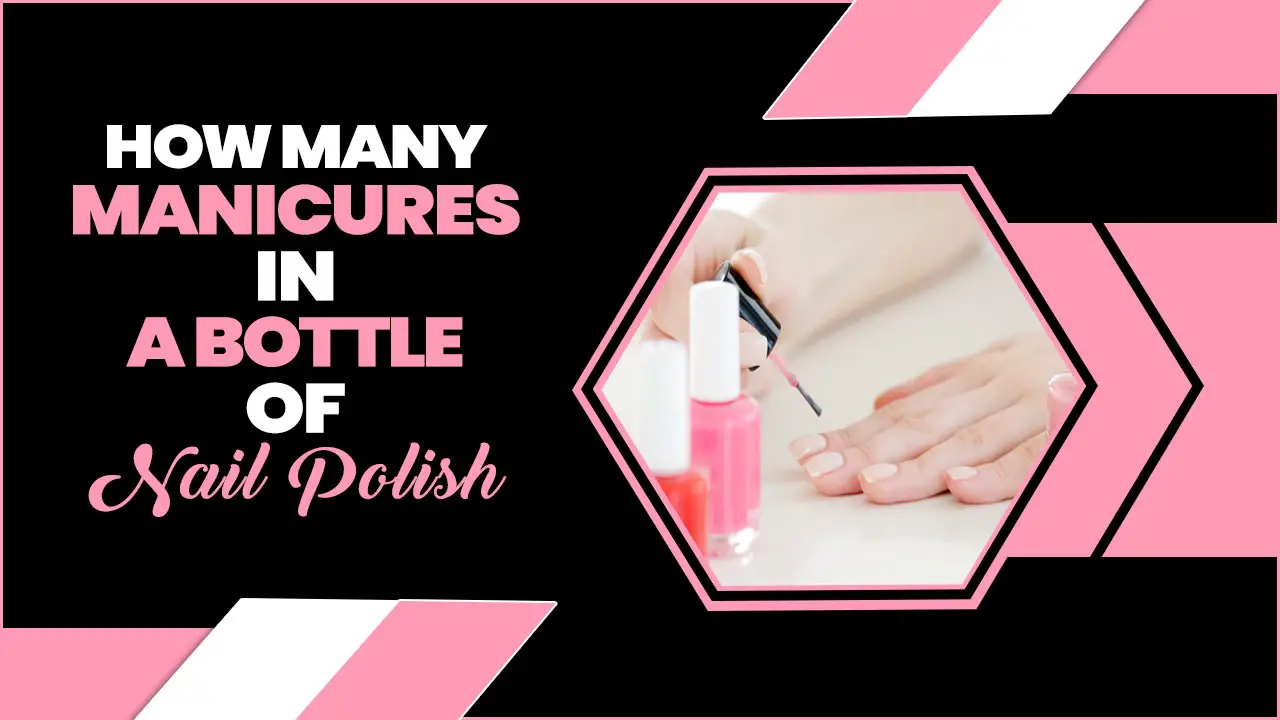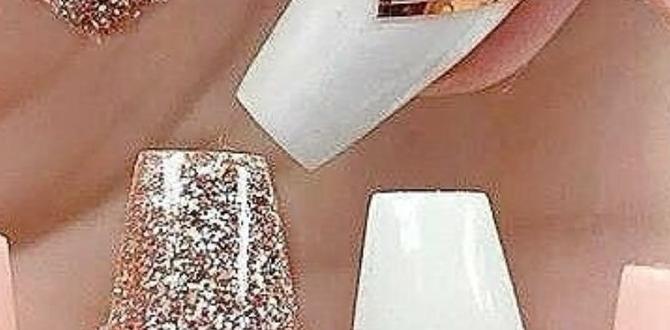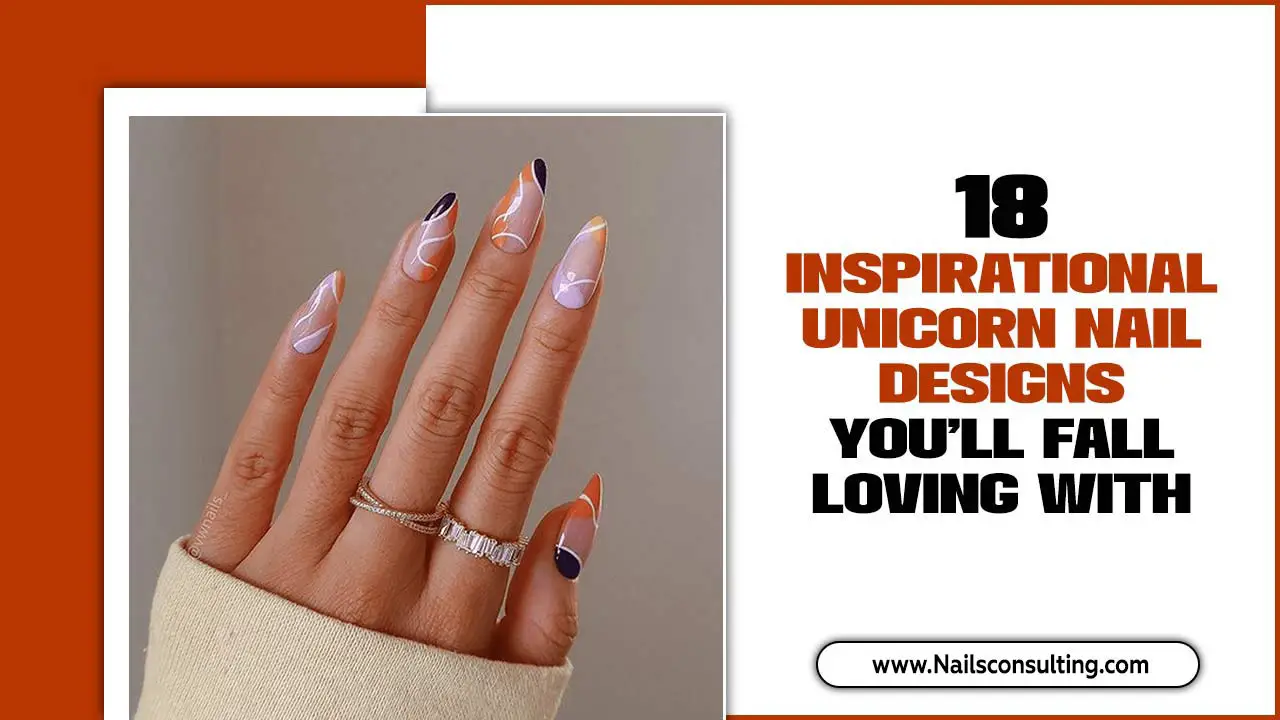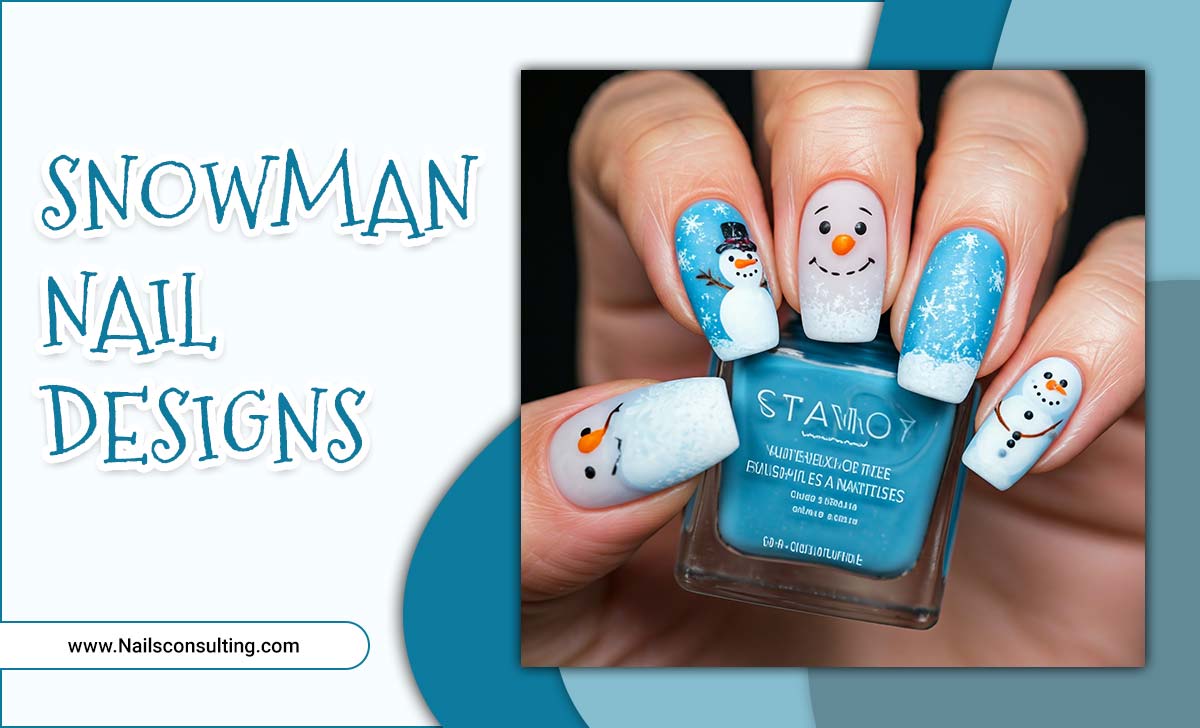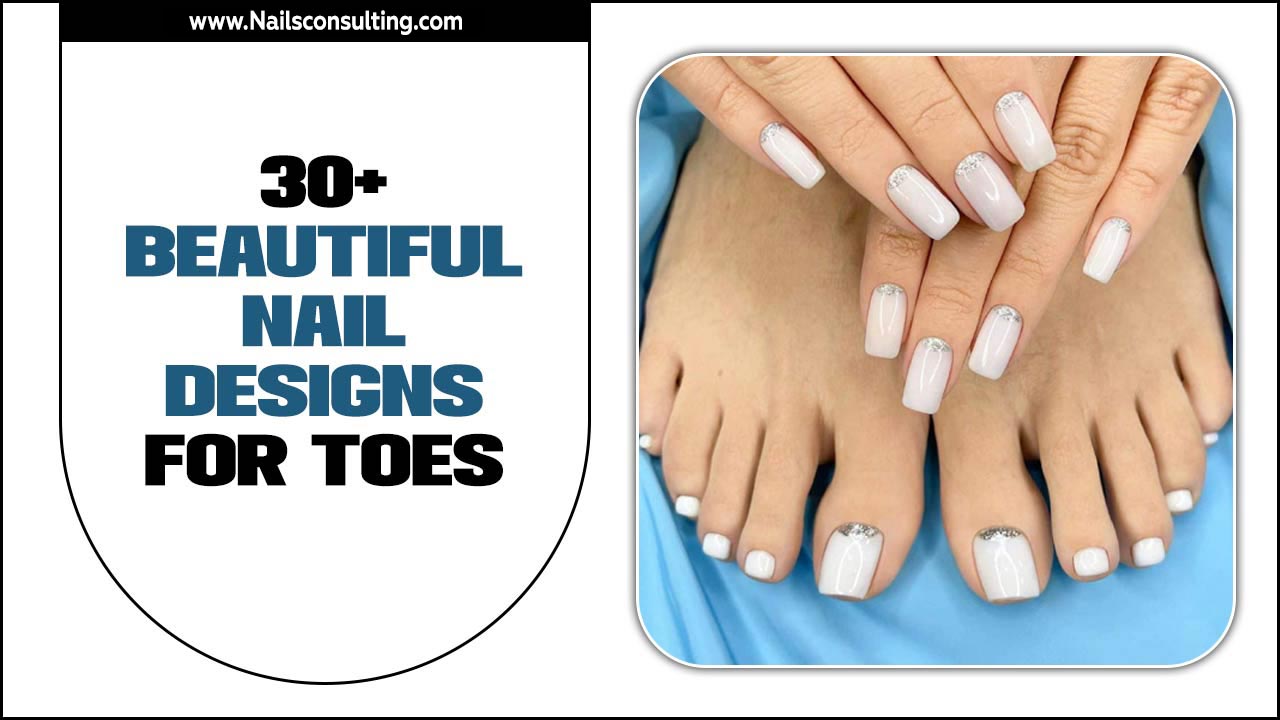Tartan nail designs are a timeless, stylish way to add a touch of elegance and tradition to your manicure. Easy to achieve even for beginners, these patterns offer endless color and style possibilities, making them a true essential for any nail art lover.
Are you looking to add a touch of sophistication and classic charm to your nails? Tartan patterns, those iconic crisscrossing stripes and squares, have graced everything from kilts to scarves, and now they’re a fabulous way to elevate your manicure game! But it can feel a little daunting to recreate these neat lines and intersections on such a small canvas. Don’t worry, it’s totally achievable! We’re going to break down how to create stunning tartan nail designs, step-by-step, making it simple and fun for everyone, no matter your nail art experience. Get ready to nail this classic look!
What Are Tartan Nail Designs?
Tartan nail designs are manicures inspired by the traditional patterned cloth of Scottish origin, featuring intersecting horizontal and vertical bands in various colors. This iconic pattern, often associated with heritage, warmth, and cozy vibes, has been adapted for nails, offering a chic and eye-catching look. Think of it as wearing a little piece of timeless style right at your fingertips!
Why Tartan is a Nail Art Essential
Tartan isn’t just a trend; it’s a classic that never really goes out of style. Here’s why these designs are a must-have in your nail art repertoire:
Timeless Appeal: Tartan patterns have a rich history and exude an air of classic elegance. They work for any season and occasion, from fall fashion to holiday parties.
Versatile Color Palettes: Whether you love bold reds and greens, subtle blues and grays, or even fun pastel versions, tartan offers endless color combinations. You can match your nails to your favorite plaid scarf or create a totally unique palette.
Chic & Sophisticated: A well-executed tartan design instantly adds a touch of polish and refinement to your look. It’s a way to express creativity without being overly flashy, striking a perfect balance.
Beginner-Friendly: While intricate patterns can seem intimidating, tartan designs are surprisingly accessible for DIY manicures. With a few simple techniques, even beginners can achieve salon-worthy results.
Festive & Cozy Vibes: Tartan naturally evokes feelings of warmth and coziness, making it especially popular during autumn and winter. However, with brighter or softer color choices, it can be a year-round delight.
Getting Started: Essential Tools for Tartan Nails
Before we dive into the fun part, let’s gather our supplies. Having the right tools makes all the difference for creating clean lines and a polished finish.
Must-Have Nail Art Tools:
Base Coat: Protects your natural nails and provides a smooth surface for polish.
Nail Polish Colors: Choose 2-4 complementary colors for your tartan design. Think of a base color and then accent colors for the stripes.
Striping Brush or Fine-Liner Tool: This is crucial for drawing precise lines. A brush with a long, thin tip is ideal.
Dotting Tool (Optional): Can be used for creating small accents or clean intersections if you don’t want to draw them.
Top Coat: Seals your design, adds shine, and prevents chipping for a longer-lasting manicure.
Nail Polish Remover & Cotton Swabs/Pads: For cleaning up any mistakes.
Recommended Additional Items:
Nail Art Mat or Tray: Protects your workspace and provides a surface to practice lines.
Tweezers: Helpful for applying nail decals or small embellishments if you choose to add them.
Sticky Tape (Optional): For creating sharp dividing lines or French tips that can be incorporated into a tartan design.
Step-by-Step Guide to Creating Tartan Nail Designs
Ready to create your own tartan masterpiece? This guide walks you through a popular and achievable method. We’ll focus on a classic, simple tartan pattern perfect for beginners.
Step 1: Prepare Your Nails
First things first, prep your nails for success!
- Ensure your nails are clean, dry, and free of any old polish.
- Gently push back your cuticles.
- If needed, file your nails into your desired shape.
- Apply a thin layer of your favorite base coat and let it dry completely. This step is vital for protecting your nails and helping your polish adhere better.
Step 2: Apply Your Base Color
Choose one of your selected colors to be the background of your tartan. Apply two thin, even coats. This color will allow your plaid lines to stand out clearly. Let each coat dry thoroughly. Patience here is key to preventing smudging later!
Step 3: Draw the Vertical Stripes
This is where the fun really begins! Grab your striping brush and your second polish color.
1. Dip your brush: Load the tip of your striping brush with a small amount of polish – you don’t want too much, or it will be thick and messy.
2. Draw the first stripe: Carefully place the brush at one edge of your nail and draw a straight line vertically down the center of your nail. Aim for a steady hand.
3. Add more stripes: Depending on your desired look, add more vertical stripes. You can space them evenly or vary the widths for a more dynamic pattern. For a classic tartan, try two or three equally spaced stripes.
4. Clean your brush: Wipe off excess polish from your brush on a paper towel.
Step 4: Add the Horizontal Stripes
Now, let’s create the crisscross effect.
1. Choose your color: This can be the same color as your vertical stripes, or a different accent color for more contrast.
2. Draw the first horizontal stripe: Using your striping brush, carefully draw a horizontal line across your nail, intersecting the vertical lines you just created. Try to make these lines flow parallel to the cuticle and free edge.
3. Add further horizontal stripes: Add more horizontal lines, similar to how you added vertical ones. You can adjust the spacing and width to mimic different tartan styles.
4. Clean up any wobbly lines: Use a fine-tipped brush dipped in nail polish remover to carefully clean up any lines that aren’t perfectly straight. This is your secret weapon for a professional look!
Step 5: Create the Intersections (The “Overlapping” Effect)
The magic of tartan often lies in how the lines appear to overlap. You can achieve this in a few ways:
Option A: Simple Overlap (Beginner-Friendly):
Once your first set of vertical and horizontal lines are dry, choose a third polish color (or go over with one of the previous colors for a subtler look). Carefully paint a thin horizontal line over the vertical stripes where they intersect. Then, paint a thin vertical line over the horizontal stripes where they intersect. This creates the illusion of depth. You can vary the colors used for these “over-lines” to create distinct tartan squares.
Option B: Using a Dotting Tool:
If drawing perfect intersections is tricky, use a dotting tool. After your initial stripes are dry, use the dotting tool to add a small dot of a contrasting color where the lines cross. This can create a stylized, modern tartan.
Option C: The Grid Method (Slightly More Advanced):
For very clean lines, particularly if you’re using a nail art pen, you can draw your initial vertical lines. Let them dry. Then, use a piece of striping tape or even regular sticky tape to create a clean dividing line. Paint your horizontal stripe, and carefully peel off the tape while the polish is still wet. This helps create very sharp edges. Repeat for all your stripes.
Step 6: Add Finishing Touches (Optional)
Want to add a little extra flair?
Alternating Colors: On some nails, you can choose simpler designs, like just horizontal stripes on one nail and vertical on another, or even a solid color that complements your tartan.
Accent Nail: Dedicate one nail (like your ring finger) to a more elaborate tartan pattern or a different design altogether that matches your color scheme.
Small Detailing: Add tiny dots or fine lines at the intersections for an extra touch of detail.
Step 7: Apply Your Top Coat and Seal the Deal!
Once all your polish is completely dry (give it at least 5-10 minutes), apply a generous layer of top coat.
1. Encapsulate: Make sure your top coat covers the entire nail surface, including the edges and the tips. This is crucial for sealing in your design and preventing chips.
2. Shiny finish: A good top coat will smooth out any minor imperfections and give your tartan nails a professional, glossy finish that will last.
3. Let it dry: Allow your top coat to dry completely before doing anything with your hands.
Popular Tartan Nail Design Variations
Tartan isn’t a one-size-fits-all pattern! Here are some ways to play with this classic design:
| Design Variation | Description | Best For |
|---|---|---|
| Classic Plaid | The iconic crisscross of vertical and horizontal lines. Typically uses 2-3 colors. | Beginners, timeless elegance. |
| Burberry-Inspired | Features thin, fine lines in beige, black, white, and red. Can be very intricate. | Those who love luxury brands, attention to detail. |
| Glitter Tartan | Incorporate glitter polish into the lines or as a base. | Adding sparkle, festive occasions, making a statement. |
| Color Block Tartan | Use bolder, less traditional color combinations for a modern twist. | Creative expression, unique style. |
| Minimalist Tartan | Focus on just a few thin lines or a small tartan accent on one nail. | Subtle elegance, busy individuals, modern aesthetic. |
| Pastel Tartan | Using soft, muted, or pastel shades for a whimsical or springtime feel. | Bridging seasons, softer aesthetics, gentle patterns. |
| Tartan French Tips | Incorporate a tartan design into the French tip portion of the nail. | A unique twist on a classic, chic and sophisticated. |
Tips for Achieving Flawless Tartan Lines
Perfection in nail art often comes down to technique and practice. Here are some pro tips to help you get those super sharp lines:
Thin Polish is Your Friend: Overly thick polish is difficult to control and will create chunky lines. If your polish is too thick, add a drop of nail polish thinner (never remover!).
Less is More with Your Brush: Don’t overload your striping brush. A small amount of polish on the tip allows for more precision.
Steady Your Hand: Rest your wrists on your desk or a stable surface while painting. You can also use your non-dominant hand to hold the nail steady. Consider using your pinky finger as a brace against your desk.
Clean Up as You Go: Don’t wait until the end to clean up mistakes. A fine-tipped brush dipped in nail polish remover can correct small slips immediately.
Practice on a Flat Surface: Before attempting on your nails, draw lines on a piece of paper or a nail art mat to get a feel for pressure and polish flow.
Let Layers Dry: This bears repeating! Ensure each layer of polish and each set of lines is dry before adding the next. This prevents smudging and helps create crisp edges.
Water-Based Stamping Polish: For extremely sharp lines, consider using a water-based stamping polish designed for nail art – these dry quickly and are very pigmented.
Tartan Nail Designs & Nail Health
While we love a good tartan design, it’s crucial to remember nail health. Here are a few points to keep in mind:
Use a Base Coat: As mentioned, a good base coat protects your nail from polish pigments, preventing staining, and provides a smooth canvas.
Don’t Skip Top Coat: A quality top coat not only seals your design but also adds a protective layer that helps prevent your natural nails from experiencing the everyday wear and tear that can lead to breakage.
Hydrate Your Cuticles: Keep your cuticles moisturized with cuticle oil. Healthy cuticles contribute to overall nail health and make the application of any nail art much easier and neater.
Take Breaks: If you wear polish constantly, give your nails a break every so often. Let them breathe and recover, perhaps applying a strengthening polish during this time.
Proper Removal: When removing your polish, use an acetone-free remover if possible, especially if your nails are dry or brittle. Soak a cotton pad, press it onto the nail for a few seconds, and then gently wipe away. Avoid scraping or peeling polish off.
The Science Behind Nail Polish Durability
Understanding how nail polish works can help you achieve longer-lasting results. Nail polish is essentially a suspension of pigments and effect particles in a solvent-based film-forming solution. When the polish is applied, the solvents evaporate, leaving behind a hard, glossy coating made of resins and plasticizers. This coating adheres to the nail surface. The “drying” process is indeed evaporation, and that’s why letting layers dry properly before the next is so important, allowing the solvents to escape and the film to set. A good top coat works by adding an extra layer of durable resin, often containing UV inhibitors that can help prevent color fading and further protect the underlying polish from chipping. For more in-depth information on nail polish composition and drying, you can look into resources from cosmetic science journals or reputable beauty industry publications.
Frequently Asked Questions About Tartan Nail Designs
Here are answers to some common questions beginners have about tackling tartan nail art:
Q1: How do I make my tartan lines straight?
A1: Use a steady hand, rest your wrists on a stable surface, and employ a striping brush with a fine tip. For extra precision, you can use nail art tape as a guide.
Q2: Can I do tartan nails with regular nail polish?
A2: Absolutely! Regular nail polish works perfectly. You’ll just need a good striping brush and patience to let layers dry in between steps.
Q3: What colors are best for tartan nails?
A3: Traditional tartan colors include deep reds, greens, blues, and neutrals like black, white, and beige. However, you can use any color combination you like – pastels, neons, or metallics can create stunning modern tartans!
Q4: My lines are smudging. What am I doing wrong?
A4: You likely haven’t let the previous layers dry completely before applying the next. Ensure each polish coat and set of lines is touch-dry before proceeding.
Q5: How long do tartan nail designs typically last?
A5: With a good base and top coat, and proper application, tartan nail designs can last anywhere from a few days to over a week, depending on your activities and nail care.
Q6: Can I create tartan designs with gel polish?
A6: Yes! Gel polish is excellent for creating crisp lines because it dries under a UV/LED lamp, preventing smudging during application. You’ll still use a striping brush.
Q7: What’s the easiest way to start with tartan nail art?
A7: Start with a simple two-color design on one or two nails. Focus on clean vertical and horizontal lines. You can always add more colors and complexity as you get more comfortable.
Conclusion
Tartan nail designs are more than just a pretty pattern; they’re a statement of classic style and personal flair. From elegant autumnal looks to vibrant, modern interpretations, this versatile design offers a canvas for creativity that’s surprisingly accessible. By gathering the right tools, practicing a few key techniques, and remembering to care for your nails, you can confidently recreate these iconic patterns right at home. Whether you opt for a subtle accent or a full-blown plaid masterpiece, tartan nails are a proven essential that adds a unique, sophisticated touch to any manicure. So go ahead, experiment with colors, embrace the lines, and wear your tartan with pride!

